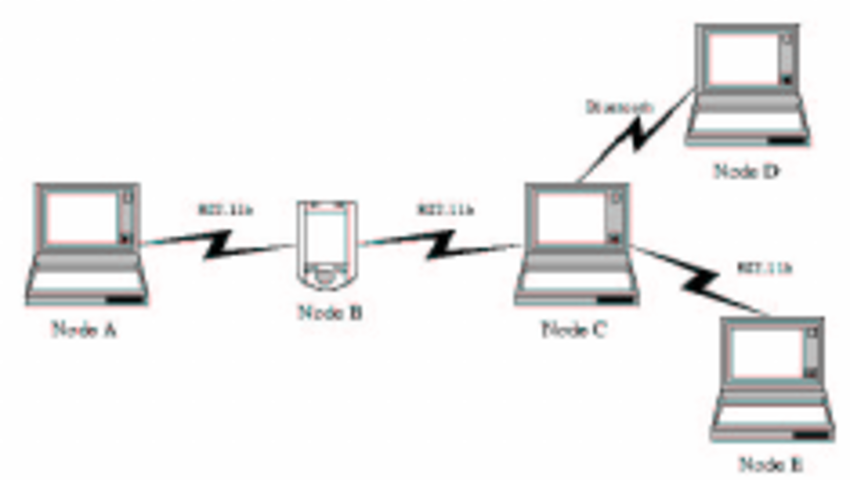Bluetooth Integration: Enhancing Connectivity in Mobile Apps

Mobile Development Frameworks: Choosing the Right One for Your App
May 26, 2024
App Onboarding: Creating a Seamless User Experience from the Start
May 26, 2024Bluetooth Integration: Enhancing Connectivity in Mobile Apps
Bluetooth integration has become increasingly prevalent in mobile applications, offering seamless connectivity and enabling a wide range of innovative features. This article explores the importance of Bluetooth integration, its applications, and best practices for implementing Bluetooth connectivity in mobile apps.
Thank you for reading this post, don't forget to subscribe!Understanding Bluetooth Integration
Bluetooth integration involves incorporating Bluetooth technology into mobile applications to facilitate wireless communication between devices. Bluetooth enables short-range data exchange between devices, such as smartphones, tablets, wearables, and IoT devices. By integrating Bluetooth functionality into mobile apps, developers can create a variety of connected experiences and unlock new capabilities.
Why Bluetooth Integration is Essential
Expanded Connectivity
Bluetooth integration extends the connectivity options of mobile apps, allowing them to interact with a diverse range of devices. From wireless headphones and speakers to fitness trackers and smart home devices, Bluetooth connectivity opens up new possibilities for user engagement and interaction.
Enhanced User Experience
Bluetooth-enabled features enhance the user experience by providing seamless connectivity and enabling convenient interactions. Whether it’s syncing data between devices, controlling IoT devices remotely, or sharing content wirelessly, Bluetooth integration adds value and convenience for users.
IoT Enablement
Bluetooth plays a crucial role in the Internet of Things (IoT) ecosystem, enabling communication between connected devices. By integrating Bluetooth into mobile apps, developers can create IoT solutions that leverage the power of wireless connectivity to automate tasks, monitor systems, and improve efficiency.
Innovative Applications
Bluetooth integration enables innovative applications across various industries, from healthcare and fitness to automotive and entertainment. Whether it’s tracking fitness metrics, controlling smart home devices, or streaming audio to wireless speakers, Bluetooth connectivity enhances the functionality and utility of mobile apps.
Applications of Bluetooth Integration
Wearable Devices
Bluetooth integration allows mobile apps to connect with wearable devices such as fitness trackers, smartwatches, and health monitors. This enables users to track their fitness goals, monitor their health metrics, and receive notifications directly on their wearable devices.
Smart Home Automation
Bluetooth-enabled mobile apps can control smart home devices such as lights, thermostats, and security cameras. Users can remotely adjust settings, monitor activity, and automate routines using their smartphones or tablets.
Wireless Audio Streaming
Bluetooth integration enables mobile apps to stream audio wirelessly to Bluetooth-enabled speakers, headphones, and earbuds. This allows users to enjoy their favorite music, podcasts, and other audio content without the constraints of wired connections.
Location-Based Services
Bluetooth Low Energy (BLE) technology enables proximity-based interactions and location-based services. Mobile apps can leverage BLE beacons to deliver targeted content, provide indoor navigation, and facilitate contactless payments in retail environments.
Automotive Connectivity
Bluetooth integration enables mobile apps to connect with in-car infotainment systems, allowing users to make hands-free calls, stream music, and access navigation features while driving. This enhances driver safety and convenience on the road.
Best Practices for Bluetooth Integration
Implementing Bluetooth integration in mobile apps requires careful planning and execution. Here are some best practices to ensure successful integration:
Choose the Right Bluetooth Version
Consider the specific requirements of your app and choose the appropriate Bluetooth version. Bluetooth Classic is ideal for applications that require high data transfer rates, while Bluetooth Low Energy (BLE) is suitable for low-power, battery-efficient applications.
Optimize Power Consumption
Bluetooth integration can have a significant impact on battery life. Optimize power consumption by using low-power modes, minimizing data transmissions, and implementing efficient data handling techniques to extend battery life.
Handle Connectivity Issues Gracefully
Anticipate and handle connectivity issues gracefully to provide a seamless user experience. Implement error handling mechanisms, provide informative error messages, and offer alternative options when Bluetooth connections are unavailable or unreliable.
Prioritize Security
Ensure that your Bluetooth-enabled app prioritizes security to protect user data and privacy. Implement encryption, authentication, and authorization mechanisms to secure data transmissions and prevent unauthorized access.
Test Across Devices
Thoroughly test your Bluetooth integration across a variety of devices and operating systems to ensure compatibility and reliability. Test different scenarios, such as device pairing, data transfer, and disconnection, to identify and address any potential issues.
Provide User Guidance
Offer clear instructions and guidance to users on how to enable and use Bluetooth features within your app. Provide tooltips, tutorials, and in-app prompts to help users navigate Bluetooth settings and interactions effectively.
Conclusion
Bluetooth integration is a powerful tool for enhancing connectivity and enabling innovative features in mobile applications. By incorporating Bluetooth functionality into your app, you can expand its capabilities, improve the user experience, and unlock new use cases across various industries. Whether it’s connecting with wearable devices, controlling smart home appliances, or streaming audio wirelessly, Bluetooth integration opens up a world of possibilities for mobile app developers. Embrace the potential of Bluetooth technology to create engaging, connected experiences that delight users and drive success in the digital age.
For more information: www.ecbinternational.com


